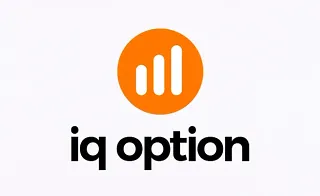Buy Side and Sell Side Liquidity are key concepts in the ICT trading strategy, playing a crucial role in identifying market structure and tracking smart money footprints.
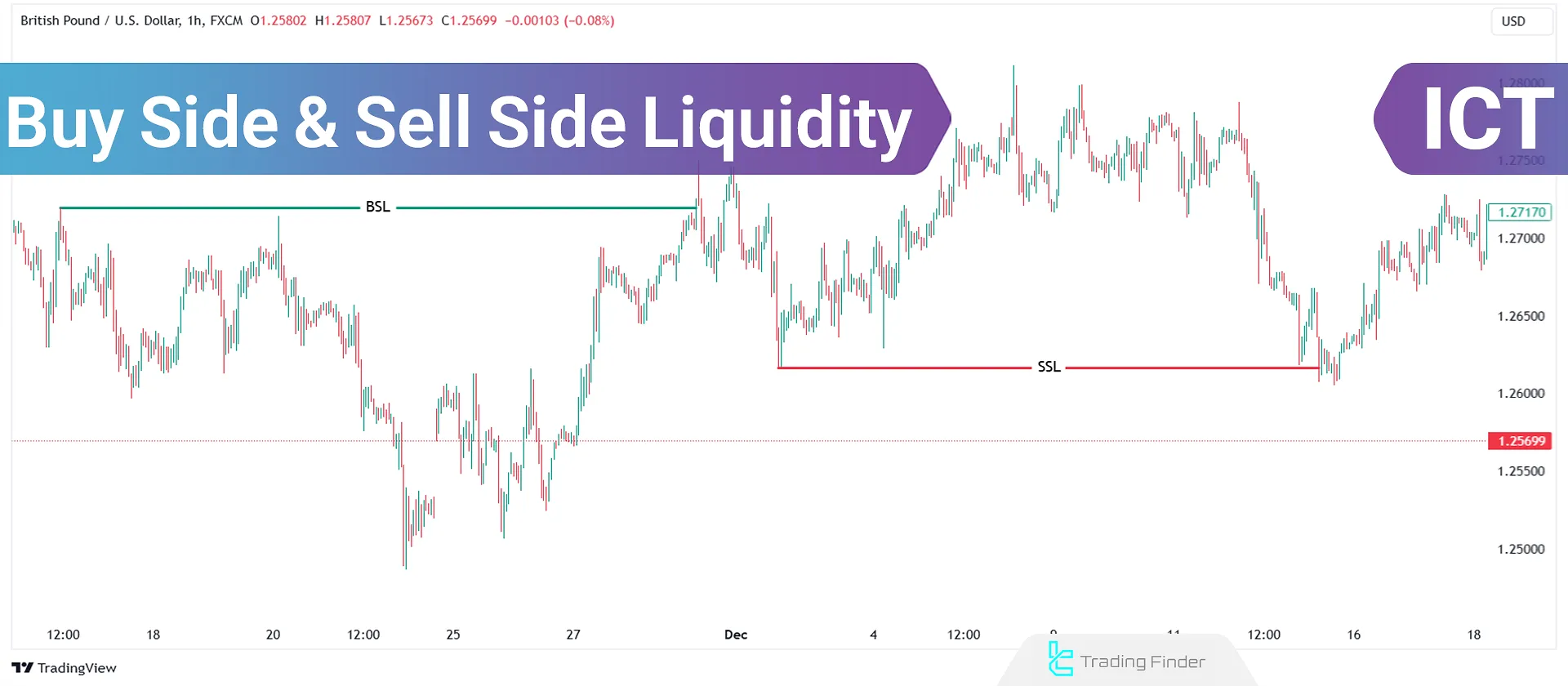
Understanding this concept enables traders to recognize areas where pending orders andstop losses accumulate, allowing for a more precise assessment of market bias through liquidity sweep analysis.
What are BSL and SSL?
There are two types of liquidity zones, and understanding them helps analyze future price trends.
Important Note: A stop loss for a Buy position is a Sell order, and a stop loss for a Sell position is a Buy order.
Buy Side Liquidity
Refers to the volume of pending orders, primarily Buy Stops, placed by retail traders to protect their Sell positions.
These orders are usually located above key price levels, such as previous highs or equal highs (EQH).
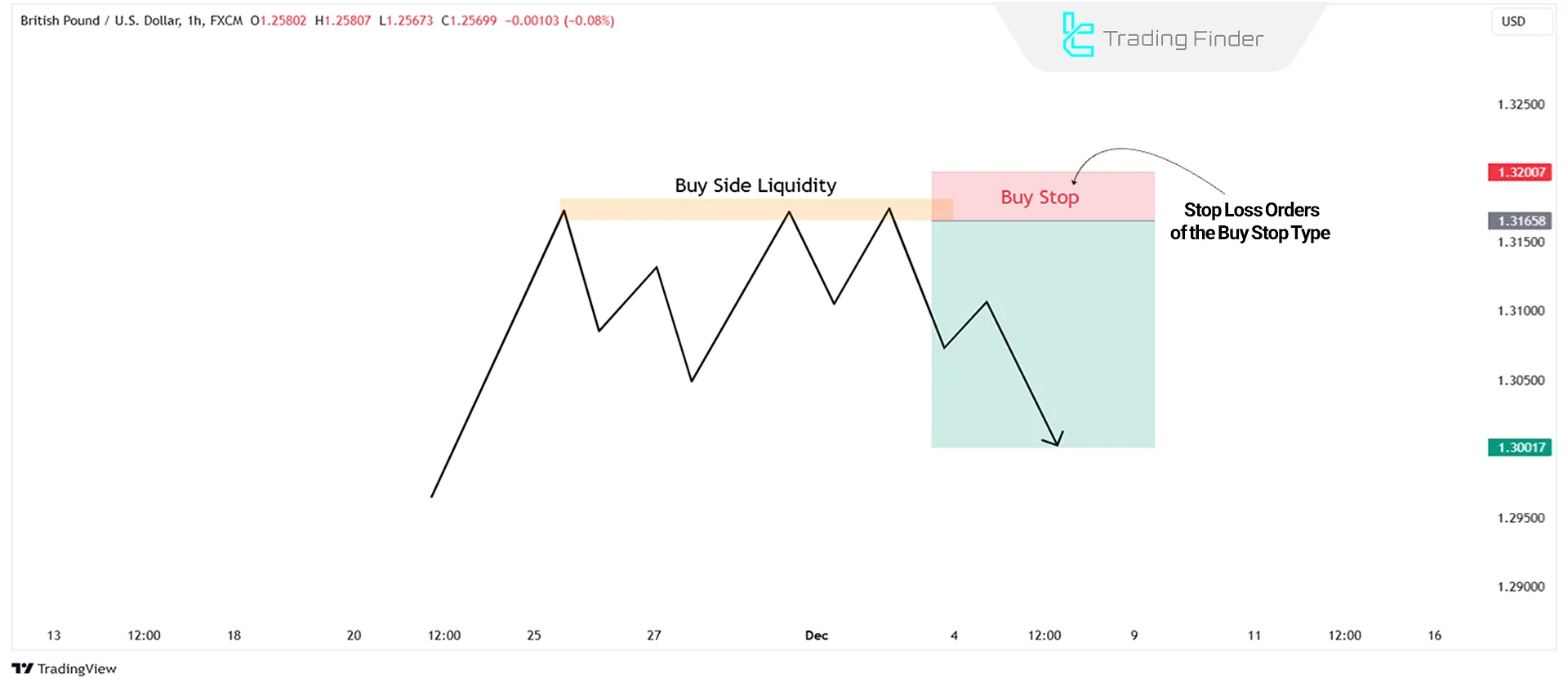
Sell Side Liquidity
Sell Side Liquidity (SSL) refers to accumulated Sell orders, typically placed as Sell Stops below key price levels.
Retail traders set these orders below previous lows or equal lows (EQL) to protect their Buy positions.
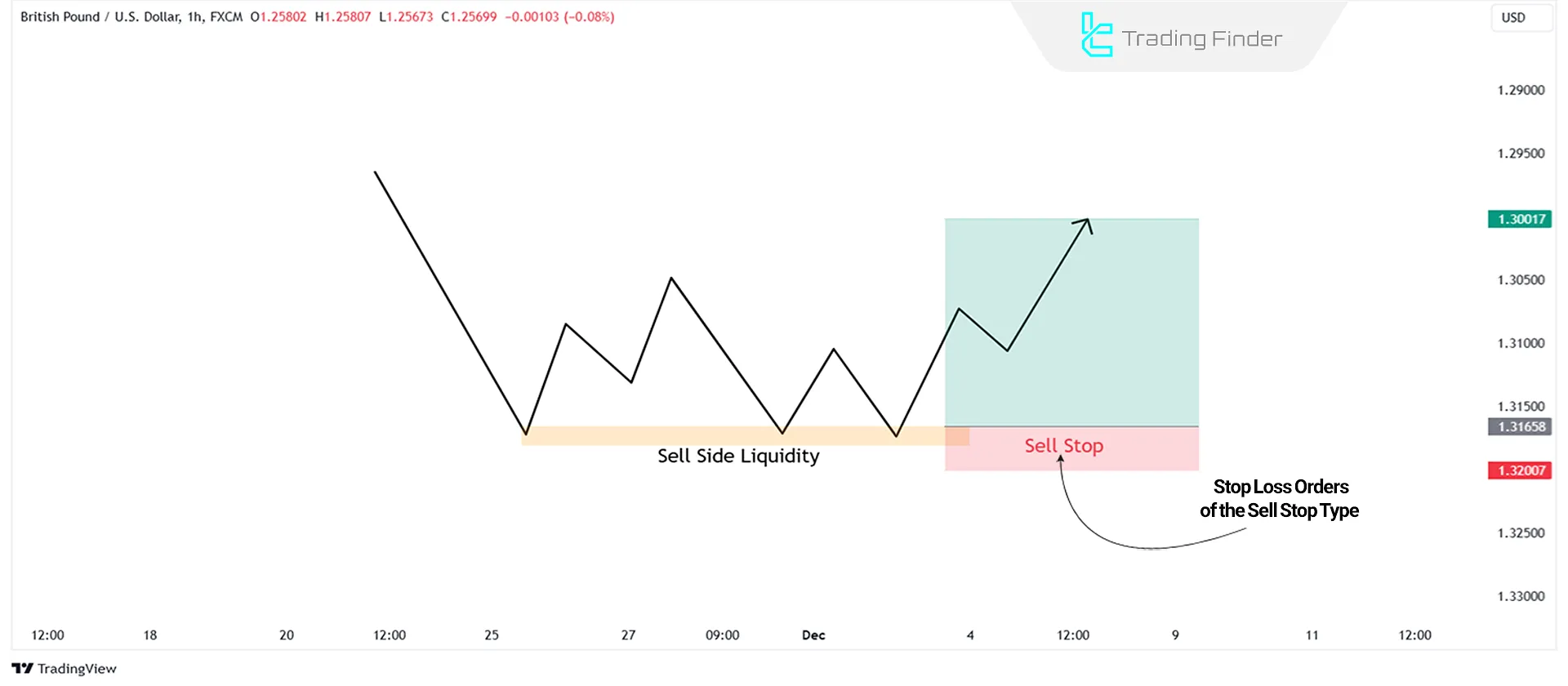
Placement of Buy Side and Sell Side Liquidity
As mentioned before, traders place Buy Stop or Sell Stop orders in key, predictable areas to protect their positions. These areas include:
- Previous swing highs/lows: swing highs and swing lows points on the chart where the price has reversed in the past
- Daily or weekly highs/lows: These zones are significant because many traders use these timeframes to set their stop losses
- Equal highs or equal lows: When two or more highs or lows align at the same level, a cluster of stop losses forms
Buy Side and Sell Side Liquidity Grab
Liquidity sweep refers to a strategic move by institutional traders aimed at triggering pending orders and stop losses. When the market approaches BSL, financial institutions may push the price slightly above resistance levels.
This action triggers retail traders' stop losses, supplying liquidity to institutional orders. The result of this liquidity grab is often a rapid bearish reversal in the market.
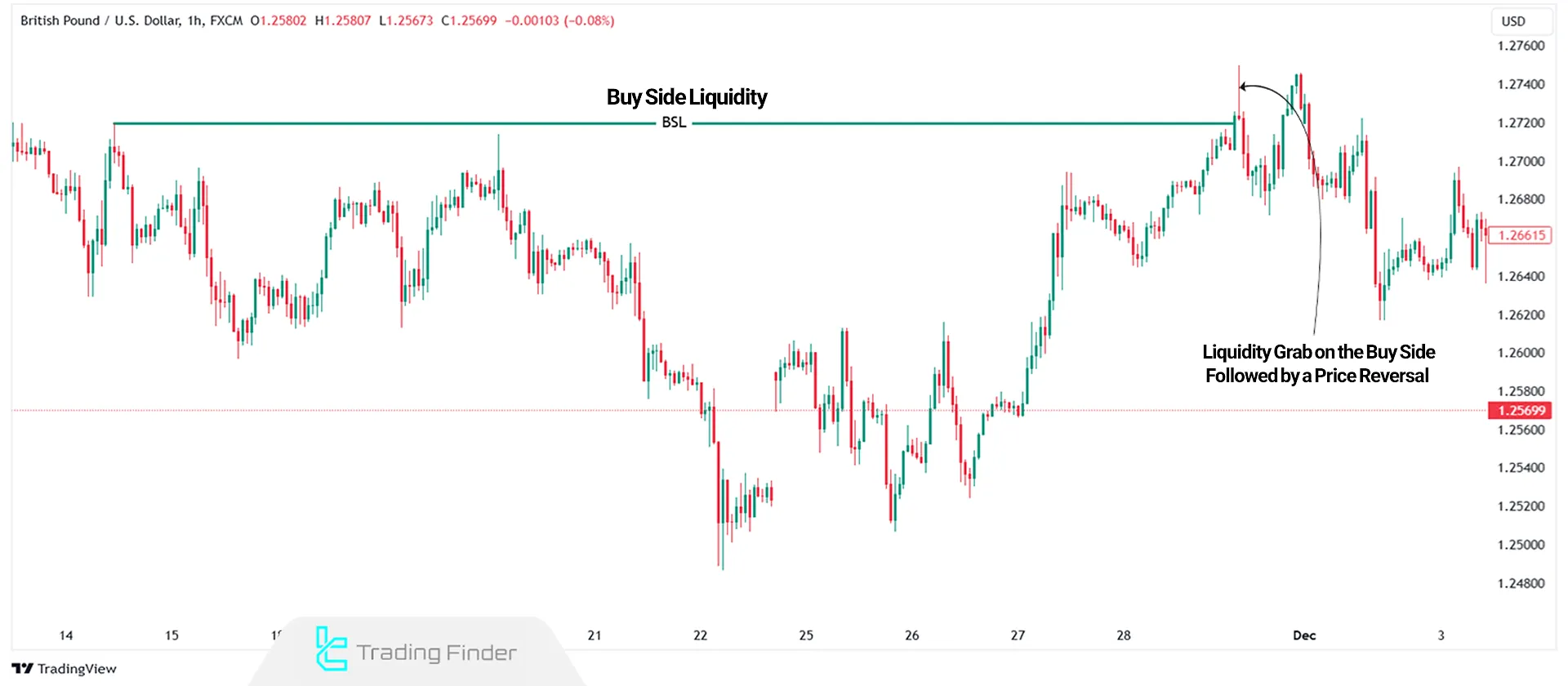
In a downtrend, a similar event occurs when the price dips below a key support level (SSL), triggering retail traders' stop losses. This often results in a sharp, bullish reversal in the market.
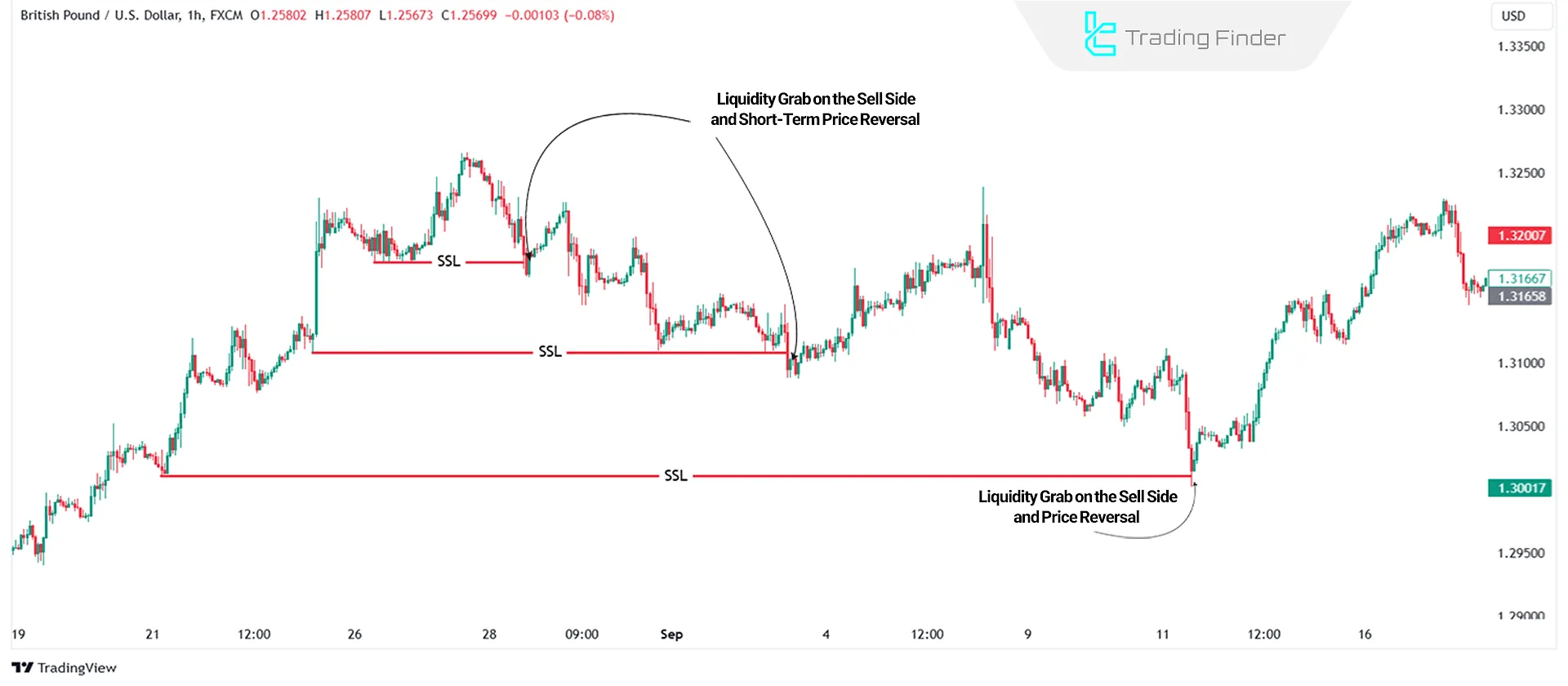
How to Use BSL and SSL in Trading
Liquidity plays a crucial role in determining the price movement direction. Methods for utilizing Buy Side liquidity and Sell Side liquidity include:
- Price is always seeking balance or liquidity absorption
- Price movement between PD arrays is driven by this search, making it essential to mark these zones
- Identifying high-quality trade setups requires analyzing market structure alongside Order Blocks and premium/discount zones on higher timeframes
- Daily timeframe liquidity is often concentrated at the Previous Week’s High/Low (PWH/PWL), the Previous Day’s High and Low (PDH/PDL), or the Asian, London, and New York session highs/lows.
- Equal highs and equal lows serve as high-liquidity areas, often targeted by institutions to grab pending orders.
Conclusion
Buy Side and Sell Side Liquidity refer to clusters of stop losses placed above highs or below lows.
Retail traders are particularly vulnerable to these traps, especially when setting stop losses at predictable levels such as previous highs/lows, equal highs/lows (EQH/EQL), session highs/lows, and daily/weekly highs/lows.
Trading during liquidity sweep comes with risks such as market manipulation, false breakouts, and unexpected volatility.
To mitigate these risks, traders should avoid placing stop losses at predictable levels and apply proper risk management strategies.
